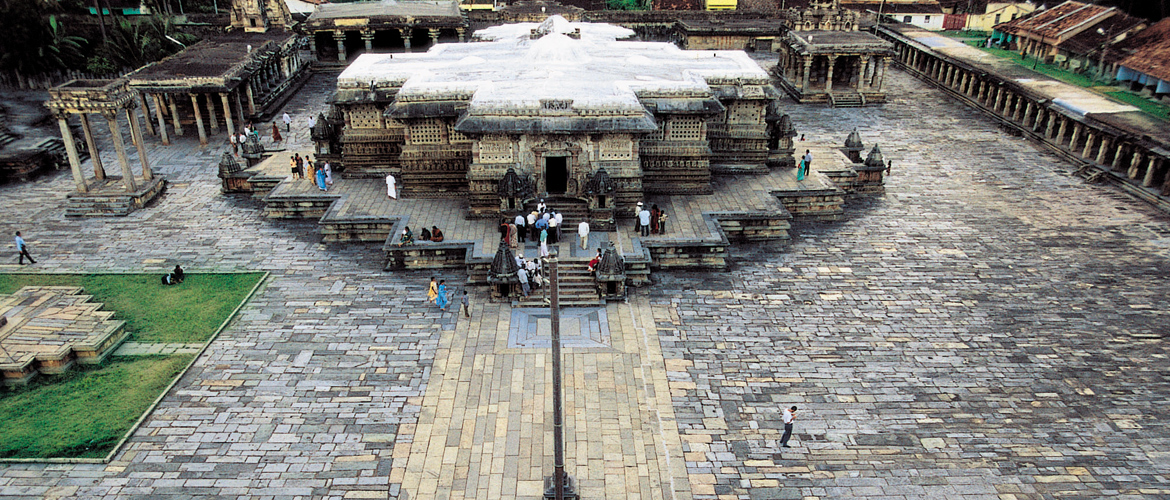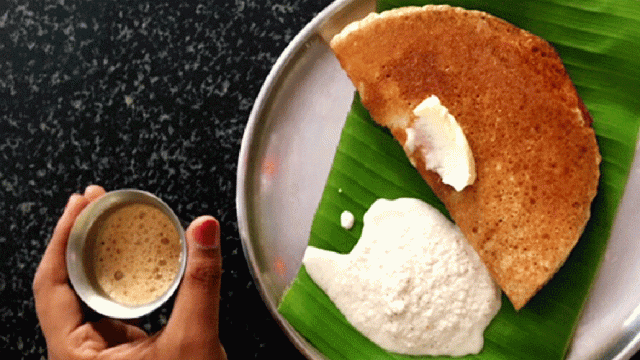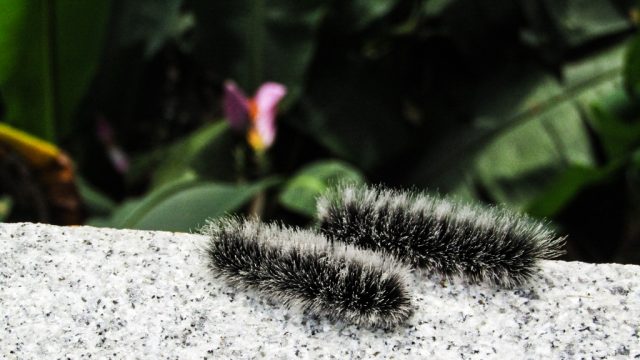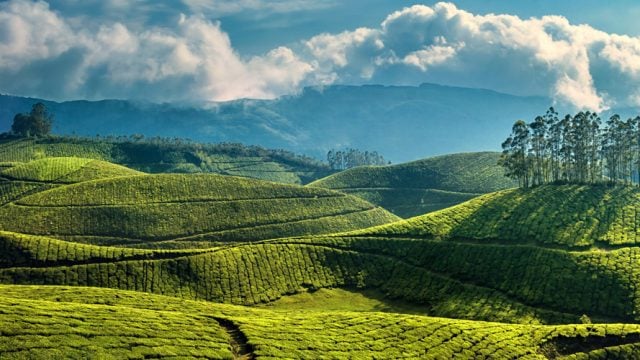Belur-Halebid go together like twin cities. Separated only by a short drive, both were home to the
The Belur and Halebid temples are cut from the soft stone called chloritic schist. It allowed for very fine detailing, evident in the intricately carved temple walls. The tradition of ivory and sandalwood handwork is reflected in the sculptures of these temples. As representations of South Indian styles they are comparable, perhaps, only to the temples at Khajuraho. Of special interest are the engineering techniques used in ‘assembling’ the temple, particularly the locking systems that used grid locks, interlocks and the pin and socket system! They were used for attaching separately carved panels onto the walls and ceilings, achieving a continuous and inseparable appearance for what are essentially disparate stone structures.
THINGS TO SEE AND DO
After a dusty drive through open land, with fields on either side culminating in a congested township, we enter the Belur Temple Complex. We come here for the sculptures, unlike any you will ever see. Stones don’t just speak at Halebid and Belur. They sing.
Chenna Kesava Temple
The temple complex has two entrances but only one gopura. This present brick tower was built in 1397, in place of the Mahadwara that was burned down during the reign of the mercurial Mohammad bin Tughlak.
Entering the complex, one is stunned by the vision directly ahead. The temple stands on a raised platform and looks like a carved casket made of wood polished to perfection, rather than something made of stone. The temple has a flat roof because its vimana was dismantled in 1879 to protect the sanctum sanctorum. There is a tank (on the right as you enter) and perforated stone screens between the exterior pillars of the main shrine.
Chenna Kesava or Beautiful Kesava must be a happy deity. His abode in Belur is one of the most gorgeous temples in India. Hundreds of devoted artisans worked for nearly a century to build him a home worthy of the gods.

Miniature shrines flank the steps to the temple. It is an ekatachala temple, meaning it has one shrine on a single platform. The temple’s inside is dark, cool and quiet. Although pujas are performed through the day, most of the visitors are tourists.
Inside the sanctum, the large image of Chenna Kesava is profusely ornamented and has a benevolent smile. His consorts, Bhudevi and Sridevi, stand on either side of him. Shlokas resound in this cavernous space, the deity is awe-inspiring, and intricate carvings hold your attention. Lord Keshava is certainly not lonely in this temple!
A tourist guide enters with a group of people. The wonder in their eyes is clearly visible despite the gloom. He points out the navaranga platform on which devadasis performed their dances. It is the largest platform in any Hoysala temple. The shining, curved pillars have square bases. The guide shepherds his flock outside and silence reigns supreme again.
There is a Narasimha Pillar to the south-east of the navaranga, which used to rotate on its own axis. A intricately carved Mohini Pillar stands to the south-west. Dim passages radiate from the centre and open out into the sunlight. One can wander around and watch as each carving comes to life. Look up and you’ll see the Madanikas, female figures in graceful poses. They seem to be entranced by their own dance. The ceiling forms a kind of octagonal hollow dome, with all the tiers or concentric rings having superbly carved figures. Look down again, and straight ahead is the light at the end of the passage. Coming out into the sunshine is like being blasted onto the sun itself. Hoysala temples have no interior passages surrounding the sanctum sanctorum. The pradarshan (circumambulation) required of all devotees is effected on the raised platform. The path is lined with splendid sculptures, representing stories from Hindu mythology.
Entry: Free; Timings: 7.30 am-8 pm (sanctum sanctorum closes 1-3 pm), open daily; Cameras Free
To the left, is the smaller, less elaborate shrine dedicated to Kappe Chennigaraya. It was built by Vishnuvardhana’s senior queen Shantala Devi, herself a follower of Jainism. At the back of the temple are three important buildings — a large mandapa, the Andal shrine, and the Soumyanayaki Temple — that were built later, using material from ruined Hoysala buildings elsewhere.
The more you look at the temple, the more you feel a deep sympathy for the Beautiful One — enclosed in one of the most attractive spaces created by man, He too must escape periodically to wander in the freedom of the hills.
Halebid
Only a short drive from Belur (16 km) is Halebid. The Hoysaleswara Temple, the main attraction here, was built in 1152. It is a dikutachala temple, meaning it has two shrines on the same platform. They are both dedicated to Shiva. The second temple in Halebid is the Shantaleswara Temple. The two temples took some 100-odd years to build.

The walk to the temple is slightly longer than at Belur, all the better for appreciating its proportions and its fine lawns. People are sprawled on the grass and resting, even scattered among the Nandi mandapas on the left.
A few steps lead you to the starshaped platform. As if that were humanly possible, the sculptures here are even more exquisite than the ones at Belur! In addition to providing more surface area for carving, the star-shaped temple walls also provide intermittent recesses for standing in the shade. No matter what functions are met by this design, the romantic reason for the star shape, as our guide said, is because “the moon and sun have eclipses but the stars shine continuously”.
Just as in Belur, many sculptures here are three-dimensional, with the backs of the figurines carved with as much detail as the front. The figures are very expressive, with emotions such as anger clearly visible. The amount of detailing is incredible. For instance, when Shiva dances, not only is his shoulder slightly lifted but even the ornaments he wears are shown flying in the air! When a character is being crushed to death, its very eyes bulge! Thus, even though the eyes should be blank since eyeballs are rarely carved, the sculptures have used body nuances to convey something more significant. The makara torana on the southern entrance is particularly well crafted.
The large Nandi mandapams are open halls, standing next to each other, and were probably added later. One Nandi is slightly larger than the other, and is said to be the third largest in India. They are beautiful, smooth, and above all, asymmetrical — difficult to achieve when you’re sculpting on this scale.
Kedareswara Temple
Built by Veerballala II and his younger queen Abhinava Ketala Devi, in 1219, the temple was never completed. It’s more of a ruin than a temple today. Close by is the Sri Ranganatha Temple.

Shopping
There’s nothing to buy except the tiny panchaloha (a precious alloy of gold, silver, zinc, copper and bronze) statues of gods and goddesses, which are nicely done. They usually cost between Rs 150 and 200 for a single statue.
Where to Stay
Belur and Halebid The KSTDC Mayura Velapuri (Tel: 08177-222209; Tariff: ₹900-2,000) in Belur near Chenna Kesava Temple, has 14 rooms and 2 dorms, a restaurant, bar and a tourist info counter. The KSTDC Mayura Shanthala (Tel: 273224; Tariff: ₹350-650) in Halebid has only 4 rooms and a restaurant; they arrange taxis and guides. Hotel Vishnu Regency (Tel: 223011, Tariff: ₹600-1,400) is a 10-min walk from the Halebid Bus Stand. The hotel organises temple visits and Internet access is available.
Hassan
For more options head to the town of Hassan (34 km from Belur), which provides a variety of hotels for all budgets. For a heritage experience, there is the Hoysala Village Resort (Tel: 08172-256764; Tariff: ₹6,300-7,500) — you can get Ayurvedic massages, play indoor and outdoor games and all meals are on the house. Hotel Hassan Ashok (Tel: 268734-36; Tariff: ₹3,799- 8,799) is an old favourite on the Bengaluru-Mangalore Road. They have a travel desk that organises tours to Belur and Halebid. Suvarna Regency (Tel: 251291; Tariff: ₹450-1,650), also on the same road, has a swimming pool, restaurant and a bar.
Where to Eat
Food is definitely a bit of a problem in this area. Hassan itself has nothing much to offer except a more conducive atmosphere for eating. And, if you’re making a day trip, you’ve to lunch at Belur or Halebid. Try Belur’s Vishnu Sagar on KG Road for good North Indian food. Avoid the South Indian meals here. Gurudev International has a bar and rooftop restaurant — try the tandoori here. Hassan gives you an opportunity to try Malnad specialities such as ragi balls with both mutton and veg stews, which taste a trifle different from their Keralite cousins. Indian food can be enjoyed at the restaurant in Hotel Suvarna Sagar. The Belur Restaurant at the Hoysala Village Resort (which also has a bar) is popular for its Indian and Continental meals. Ashok Hassan’s Shanthala multicuisine restaurant is popular for its Continental and non-spicy Indian dishes. Its coffee shop and bar are also quite busy. If you don’t want to rush back for lunch at Hassan, you could also try the KSTDC Mayura or some of the Udipi-style restaurants. Kamat’s Restaurant, 35 km away from Hassan, en route to Bengaluru, is very popular for its vegetarian fare.
Belur
Halebid
Halebidu





